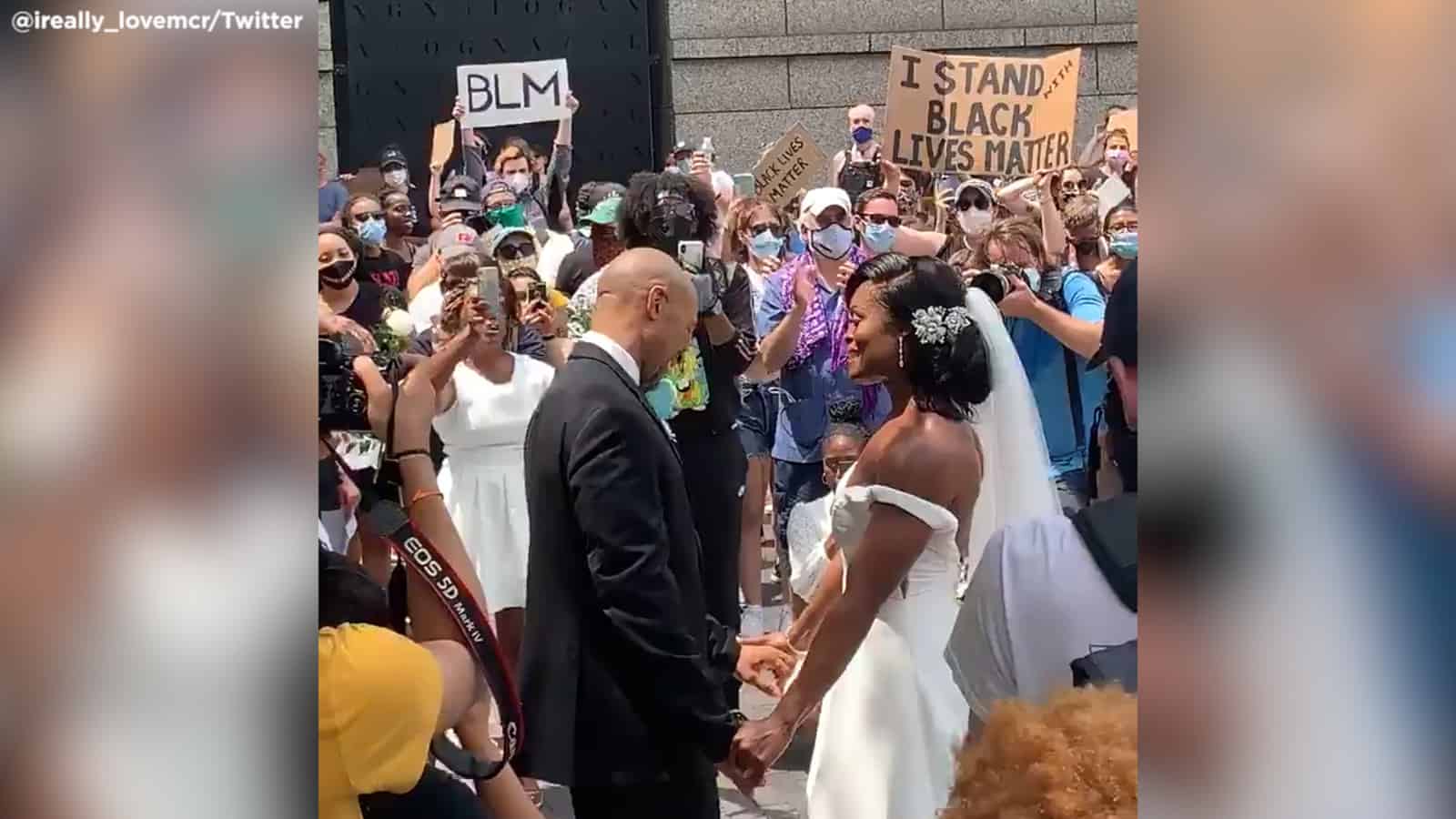Writing a Wedding Ceremony Playbook
As a creative and a wedding officiant I let my couples know they don’t have to write a wedding ceremony for themselves. That’s my job.
 Maybe that’s because I like to put words together to form a picture and a felling. Plus I love to find things out about my couple and incorporate them into what I call my Framework Ceremony. It’s the bones of the ceremony I always use.
Maybe that’s because I like to put words together to form a picture and a felling. Plus I love to find things out about my couple and incorporate them into what I call my Framework Ceremony. It’s the bones of the ceremony I always use.
There are officiants who create a new ceremony every single time. But over the more than 30 years I’ve been involved in leading wedding ceremonies, I’ve chosen the best wording and sentiments to convey the power of their commitment and love. And this distilling of years of content is what’s in the bones or “framework” of my ceremony.
Whether I’m officiating for a full-fledged traditional, unique or elopement ceremony, there are a few common elements that speak to the moment of all of them that my couples will hear.
Contributing to the ceremony playbook
There are definitely things you can and should bring to the table to help me write a wedding ceremony for you. Such as:
- What you value such as community, family, generosity, trust, human rights, having people’s best interests in mind, etc.
- Whether you’re religious or not and what’s important about your preference. Ceremonies are traditionally a religious rite but that’s no longer true.
- A favorite story or two about being together that does NOT have to do with how you met or how the proposal took place. My belief is everyone at your ceremony probably knows those stories already, so why repeat them?
- Something poetic or creative that illustrates what loving each other means to you.
- What your comfort level is in standing in front of people .
- Your vows.
- How you prefer to be introduced as a married couple.
What you choose is what makes up your ceremony playbook. BUT there’s another playbook and that’s the way you move through your ceremony.
How You Move through Your Ceremony
Even modern couples still accept that there’s a procedure and shoulds that may get in the way of truly expressing who they are.
Here’s what I mean: Close your eyes and imagine getting married. There’s a procession of groomsmen and bridesmaids, followed by little ones throwing flowers and another person, usually Dad, walking the bride up the aisle to the groom who’s waiting with the minister.
It’s a timeless playbook. It has the impressive mark of tradition.
An Obsolete Playbook?

Photo by Jamie Coupaud on Unsplash
But often this tradition is enacted without considering where that tradition came from and so an outdated, even insulting (to many) tradition gets re-enacted. An obsolete playbook sets the tone and runs its course.
To be clear, here’s where that tradition came from and you tell me if this is okay for your ceremony playbook: The father walking down the aisle may feel super special. But it’s a playbook that’s rooted in arranged marriages where the father gives the possession of his daughter or female charge to the next possessor, the groom. In fact, the father’s looming presence was a good way to prevent the groom from backing out.
Political and Transactional
In its earliest form, marriage was a business/political transaction and involved a dowry. A dowry is kind of a “here’s your reward for taking over this responsibility, hope you have lots of babies to run the farm and pay your taxes” gift.
Next, the traditional playbook would have the father respond when asked by the officiant, “Who gives this woman to this man?” Even though today women are not property, and the bride price/dowry isn’t exchanged, the father is primed to say, “I do.” Never mind Mom. She’s a woman after all.
Suggested changes to promote our day and time
I’m for breaking up this playbook and setting the power of ritual on a new course. So in this instance, I have a few changes to writing a ceremony and to significantly change from that was good then, but this is now, playbook.
When I’ve welcomed (for sake of ease of conversation because LGBTQ couples still enact this tradition) the father and the bride, instead of asking, “Who gives this woman to this man?” I say, “Who brings this woman to this man in their mutual desire to be married?”
Prior the ceremony I’ve asked the escort/Dad to consider answering, “The Family and I,” “Her mother and I,” as well as “I do.”
But there are other ways to reinvent this coming together. Ritual is good in that it helps instill the idea that this couple is entering into a new chapter of their individual lives.
From Aisle to Circle
 Consider beginning the ceremony with the parents of both members of the couple in a circle (or with the attendants) and the couple enters together. They then stand in the middle of the circle for the welcome.
Consider beginning the ceremony with the parents of both members of the couple in a circle (or with the attendants) and the couple enters together. They then stand in the middle of the circle for the welcome.
A statement can be made: “Let’s welcome this couple into the ritual of marriage.” This can also be made into a question.
There are other ways to reinvent the entrance, but the important thing, whether your entrance remains traditional or is innovative, when you or I write your wedding ceremony, include consideration of what your ceremony playbook is, rather than just falling in line without considering meaning.
We’re in the age of reinvention. Things are being changed in almost every area of our lives. Change can be for good. Within all change, I know your love makes the world a better place. This tradition will never change.
Namaste my wonderful about-to-be-married couples! Contact me to find out how I can help you write your own unique wedding ceremony playbook. We’ll have a wonderful time, I am sure of it!

Rev Crystal
The post Creating Your Own Wedding Ceremony Playbook appeared first on Northern Michigan Wedding Officiants — Genuinely Happy for You and the Love You’ve Found.
This content was originally published here.

